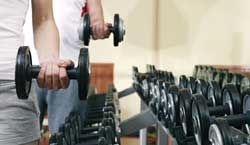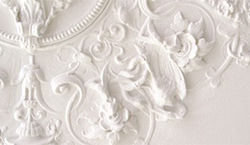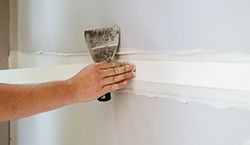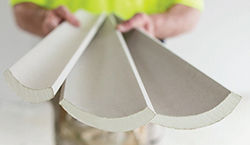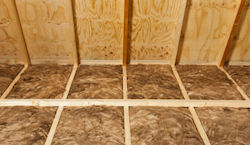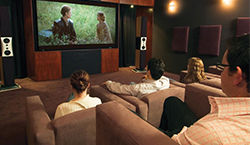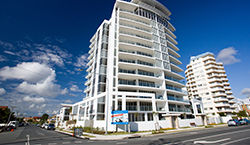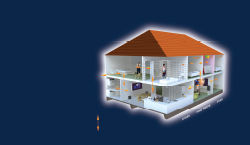KNAUF WETSTOP. 12,000,000m2 RUNS ON THE BOARD. NOT OUT
We put Knauf Water Resistant Plasterboard to the ‘Test’ and bust some common myths about plasterboard in Wet Areas.
DID YOU KNOW?
More than 12 million square metres of Knauf WETSTOP™ water resistant plasterboard have been installed in Wet Areas around Australia.
Knauf lining products such as WETSTOP, FIRE WETSTOP, FIBEROCK® and Multistop™ 4, Multistop 4HI, Multistop 5 and Multistop 5HI are water resistant and meet the National Construction Code (NCC) requirements for domestic wet areas.
Refer to the Knauf Plasterboard Installation Manual for NCC Regulatory requirements for Wet Areas.
Water resistant plasterboard obtains its impressive water-resistant properties from a range of special ingredients added to the core of the board. Its moisture resistant core limits water wicking up the board causing damage to the board itself or the surface finish.
Water Resistant Plasterboard is suitable for use in:
- Bathroom renovations – big or small
- Kitchen updates – new tiling/splashbacks
- Alfresco areas – outdoor entertaining/dining areas
- Laundries – ‘mud’ rooms ‘boots and all’
Find a Knauf Wet Area plasterboard store near you
IT’S IMPORTANT TO KEEP SOME THINGS DRY

- All of Knauf’s water-resistant plasterboard range comply with Australian/New-Zealand Standard: ASNZ:2588, section 9.2.
- Knauf Wet Area System requires total waterproofing of wet area walls with a waterproofing membrane complying with AS/NZS 4858 Wet Area Membranes and applied by a specialist contractor in accordance with membrane manufacturer’s recommendations.
- Current waterproofing methodologies are to apply a warrantied waterproofing membrane system 1800mm up from the shower floor and 1500mm radius from the shower head.
- The Tile Weight capacity for water-resistant plasterboard and fibre cement are the same. Eg. 12mm thick porcelain tiles hung with 6mm adhesive = same weight/load ie. Max tile weight is 32.00 kg/m2 for both WR Plasterboard and Fibre Cement board.
- Knauf WETSTOP can be recognised by its blue-grey face paper and is available in 10mm and 13mm thicknesses.
- Unlike 6.5mm fibre cement sheets, 10mm WETSTOP is the same thickness as standard plasterboard walls in non-wet areas – making it easy to join and finish. It also has sound resistance qualities to help reduce noise from bathrooms & toilets.
- Water resistant plasterboard used in residential kitchens must be fire resistant as well* – Knauf Fire + WetStop is a simple and sound solution. (*Refer – Wet Area Plasterboard Installation - Australian/New-Zealand Standard: ASNZ:2588, section 9.2.)
- FIBEROCK® is a water resistant paperless gypsum board with the additional benefits of mould resistance and high impact resistance.
- FIBEROCK® contains 95% recycled materials and is available in 13mm and 16mm thicknesses.
Find a Knauf Wet Area plasterboard store near you
WHEN PLANNING YOUR ‘WET AREA’ RENOVATION…

When planning your renovation there are a few things to consider to ensure the long term performance of plasterboard walls and ceilings – particularly in wet areas around the home such as bathrooms, kitchens and laundries.
CONDENSATION
- Condensation occurs when warm and humid air comes into contact with cold surfaces, and is more likely to occur where there are large differences in temperature and the moisture content inside the house is high.
- This is often the case in rooms with appliances that generate heat and moisture such as ovens, showers and clothes dryers.
- If left untreated, condensation may result in build-up of mould and/or structural damage including joint and corner cracking in the building and health concerns for occupants.
- You can help to minimise internal condensation in your home by;
- Keeping air spaces well ventilated
- Installing an exhaust fan to vent moist air outside the house and not into the roof or ceiling space
- Use vapour barriers and insulation inside the wall cavities (Place vapour barrier on the warm side of insulation).
NOTE: Knauf recommends that ceiling paint in wet areas should be water resistant.
VENTILATION
Roof spaces and second-storey floors should be well ventilated to prevent condensation and heat build-up (especially in buildings with dark coloured roofs without sarking).
Ample air space is necessary for good ventilation in ceiling areas, particularly below tiled roofs with aluminium foil sarking.
Knauf recommends ventilating unheated roof spaces above ceilings in cold or moderate climates by:
- Using louvres or other ventilation devices (ie Whirlybirds) to cross-ventilate roof space
- Ensuring any attic space suitable for use as a habitable room, or walled-off storage area has at least 50% of the required ventilating area located in the upper part of the ventilated space.
- Restricting the unheated space to as near the high point of the roof as possible and above the anticipated level of any future ceilings.
NOT JUST GOOD FOR HOMES – COMMERCIAL WET AREAS TOO

Wet areas in commercial buildings may require resistance to fire, mould and impact in addition to water resistance. This is possible with products such as USG Boral FIRE + WETSTOP, MULTISTOP 4 (HI) and 5 (HI)
Some public buildings may also need sound resistance to prevent noise disturbing other occupants eg. commercial kitchens. WetStop Plasterboard also offers sound resistance to help prevent kitchen noise disturbing diners in adjacent areas such as the restaurant.
Refer to USG Boral Plasterboard Installation Manual for NCC Regulatory requirements for Wet Areas.
Find a Knauf Wet Area plasterboard store near you










